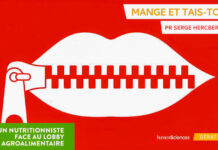‘Gluten-free’ is a leitmotif that now appears on the labels of any food and drink, beyond the logic that originally inspired its use. And sometimes, in violation of food labeling rules.
‘Gluten-free’, what meaning?
Celiac disease, a chronic intolerance to gluten, is an endemic disease affecting varying proportions–between 1 and 2 percent, depending on region–of the global population. The only treatment available to date for patients with celiac disease is a strictly gluten-free diet.
Patient associations-most notably AIC, the Italian Celiac Association-have made extraordinary efforts over the past decades to ensure a safe and peaceful existence for celiacs and their families. They fought, such associations, in the different contexts:
– at the regulatory level, to ensure the dutifulness of appropriate and prominently displayed information on food labels in the event of the possible presence of gluten-containing grains, including through accidental contamination. (1) Such information is also due in cases of bulk food sales, such as croissant and sandwiches displayed in bar windows, or street food. As well as in all cases of food serving in public establishments, canteens and catering, (2)
– at industries and manufacturing companies, through works to raise awareness and encouragement to develop product lines for celiacs in product areas where cereals containing gluten are traditionally used (baked goods and ready meals first and foremost),
– in public establishments in the territory (restaurants, pizzerias, hotels, ice cream parlors, artisan workshops), promoting the effective application of self-control in order to prevent accidental contamination. Through training activities, to which can be added certification procedures and audits of operators truly able to offer safe food and meals for this vulnerable group of consumers,
– in public health to spread awareness of the endemic nature of this disease and promote diagnostics as early as the first months of life. (3) In addition to ensuring adequate health care, and guaranteeing that all people with celiac disease are provided with free food products that are consonant with their specific dietary needs, (4)
– at the scientific level, promoting scientific research needed to address the diverse conditions of patients and promote their health, taking into account the needs for proper health and nutrition. Advancing studies on nutrition and food technologies in order to compose balanced diets Without ever losing hope of identifying new means of treatment,
Gluten-free, a fad of the many for the profit of the few. Beyond all logic
‘The gluten-free diet is not a fad!” the Italian Celiac Association (AIC) has been reiterating for years. People with celiac disease have no choice; the gluten-free diet is a lifesaver for them, the only possible therapy. But 99 percent of consumers feel interest in gluten-free products in the belief that they are somehow conducive to wellness, or weight loss. False. (5)
Ten percent of the European population, 6 million consumers in Italy, are on a gluten-free diet for no reason. One out of every three ‘gluten-free’ products is consumed by non-celiacs who thus delude themselves into thinking they are losing weight or improving fitness (!). Instead, except that in Italy alone, more than 100 million euros are wasted on the purchase of food that is not needed. (6)
How can this phenomenon be explained? Simply by viral deception, the strategy of viral deception being carried out by
Big Food
, for numerous years now. The supply of gluten-free products has flourished, saving on production costs-substituting valuable grains (such as wheat) for cheaper ones (such as corn)-while raising prices. Bingo!
Some international stars in turn just happen to celebrate the scripted ‘gluten-free no-need’ diet. From Lady Gaga to Victoria Beckham, Gwyneth Paltrow, and Kim Kardashian, viral deception is spreading to hundreds of millions of social media followers. And the lucrative business is growing apace.
Instead, ‘good old gluten’ is a valuable protein, to which our organisms are well accustomed-except in cases of celiac disease alone-as it is present in the grains that have nourished European populations since Neolithic times. Unlike corn, for example, which was only introduced to Europe in the modern age. (7) And it is a champion of sustainability, thanks to a water and environmental footprint well below other protein sources.
‘Gluten-free’ and ‘gluten-reduced’ label rules
‘Gluten-free’ and ‘gluten-reduced’ foods, which used to be qualified as ‘foods for special dietary purposes,’ are now subject to the rules for foods in common use. (8)
EU Regulation 828/2014, ‘on information requirements for consumers about the absence of gluten or its reduced presence in food‘, confirmed the tolerance thresholds already defined (9). It also introduces the possibility of carrying certain optional special wording on the label when the conditions are met.
The words ‘specifically form ulated for people with celiac disease’ or ‘specifically formulated for people intolerant to gluten,’ (10) may be used in the labeling of so-called substitute foods. That is, products traditionally made with gluten-based ingredients (e.g., pasta, bread, etc.), which have been replaced with other naturally gluten-free raw materials or with ‘de-glutenated’ ingredients.
‘Gluten-free’ in labeling, conditions of use
‘A food containing naturally gluten-free ingredients should also be allowed to bear labelling indicating the absence of gluten, in accordance with the provisions of this Regulation, provided that the general conditions on fair information practices set out in Regulation (EU) No 1169/2011 are met. In particular, food information should not mislead by suggesting that the food possesses special characteristics, when in fact all similar foods possess the same characteristics.’ (EU Reg. 828/14, Recital 10)
 In the case of foods where gluten is generally not found-because it is naturally absent in their essential and characteristic ingredients-the rule is crystal clear:
In the case of foods where gluten is generally not found-because it is naturally absent in their essential and characteristic ingredients-the rule is crystal clear:
– if a gluten-containing cereal is present (or may be, due to accidental contamination that cannot be ruled out, even after due self-checking), the specific gluten-containing cereal must be mentioned in the ingredient list (where appropriate preceded by the words ‘may contain’),
– Conversely, the boast ‘gluten-free’ is not allowed, as this characteristic is common to other similar products. Indeed, it is expressly forbidden to attribute to a product characteristics common to other foods that belong to the same category. (12)
It is therefore time to do away with gluten-free wording on a multitude of products that have little or nothing to do with gluten-containing grains, from dairy products to fruit juices, meats and candies. ‘Gluten-free? We would be very much missed!
Dario Dongo
Notes
(1) See reg. EU 1169/11, Article 21 and Annex II. NB: It is necessary to specify the presence of individual grains, in order to protect even consumers allergic to each of them. See, in this regard, the recent European Commission Guidelines, at https://www.greatitalianfoodtrade.it/etichette/allergeni-linee-guida
(2) See reg. EU 1169/11, Article 44.1.a. The question remains, in this regard, as to why European rules are still being violated by almost all public merchants. And why https://www.greatitalianfoodtrade.it/etichette/controlli-il-ruolo-dellamministrazione-sanitaria/
(3) The AIC estimates that there are 600,000 celiacs in Italy, of whom only 190,000 are diagnosed. That is, 70 percent of people with celiac disease are unaware of their condition
(4) Currently, in Italy, products are provided up to a monthly ceiling of about €90 per patient
(5) On the other hand, concerns have been expressed toward the adoption of gluten-free diets outside of strictly necessary cases, in a recent Harvard University research
(6) The market for gluten-free products in Italy grew 27 percent in 2016 compared to the previous year. For a total value of €320 million, of which only €215 million was spent by diagnosed patients (Nielsen data presented by AIC in May 2017, on the occasion of Celiac Disease Week)
(7) The lower ability of the European population to assimilate corn is demonstrated by the endemic pellagra, which also affected northern Italy between the 18th and 19th centuries
(8) See reg. EU 609/2013, effective 20.7.16
(9) 20 ppm and 100 ppm, respectively, for the terms ‘gluten-free’ and ‘gluten-reduced’
(10) The Ministry of Health Decree 17.5.16 then clarified that in order for gluten-free foods to be included in the registry of products dispensable to people with celiac disease, they must bear these appropriate indications on the label
(11) See notes 1 and 2 above.
(12) Cf. reg. EU 1169/11, Article 7.1.c
Dario Dongo, lawyer and journalist, PhD in international food law, founder of WIISE (FARE - GIFT - Food Times) and Égalité.









